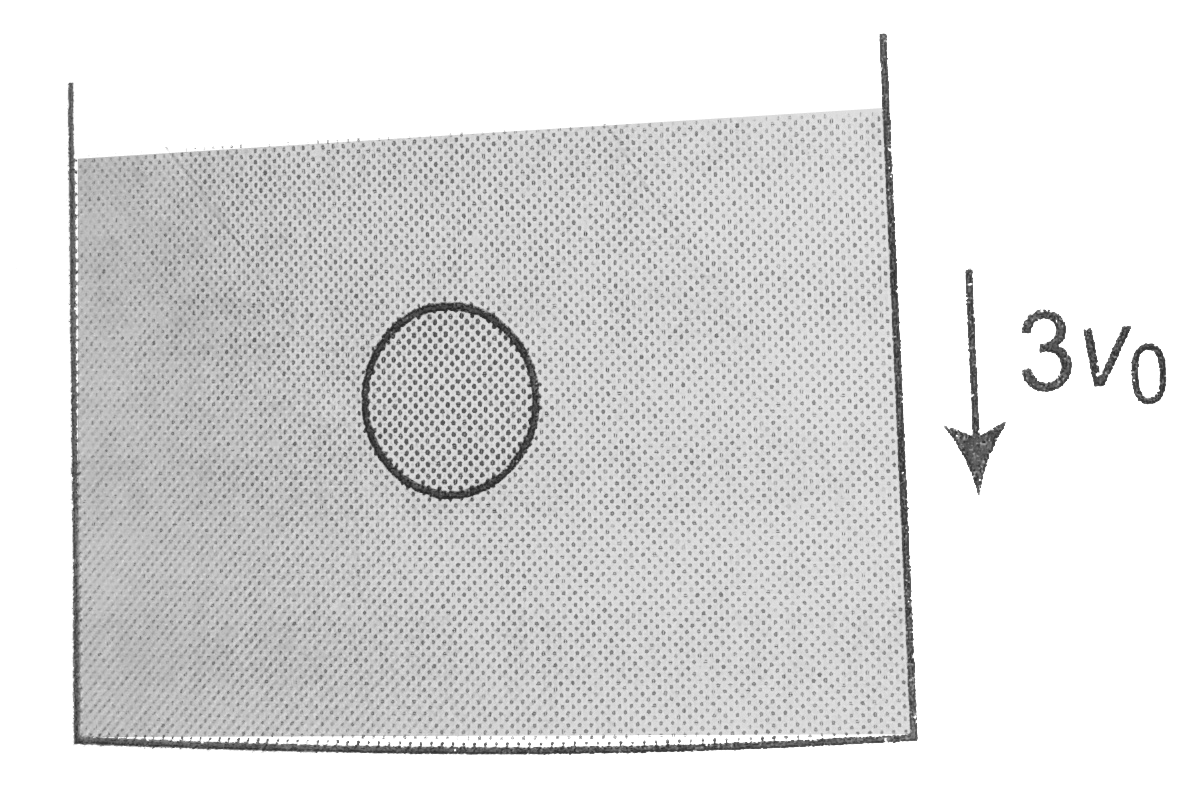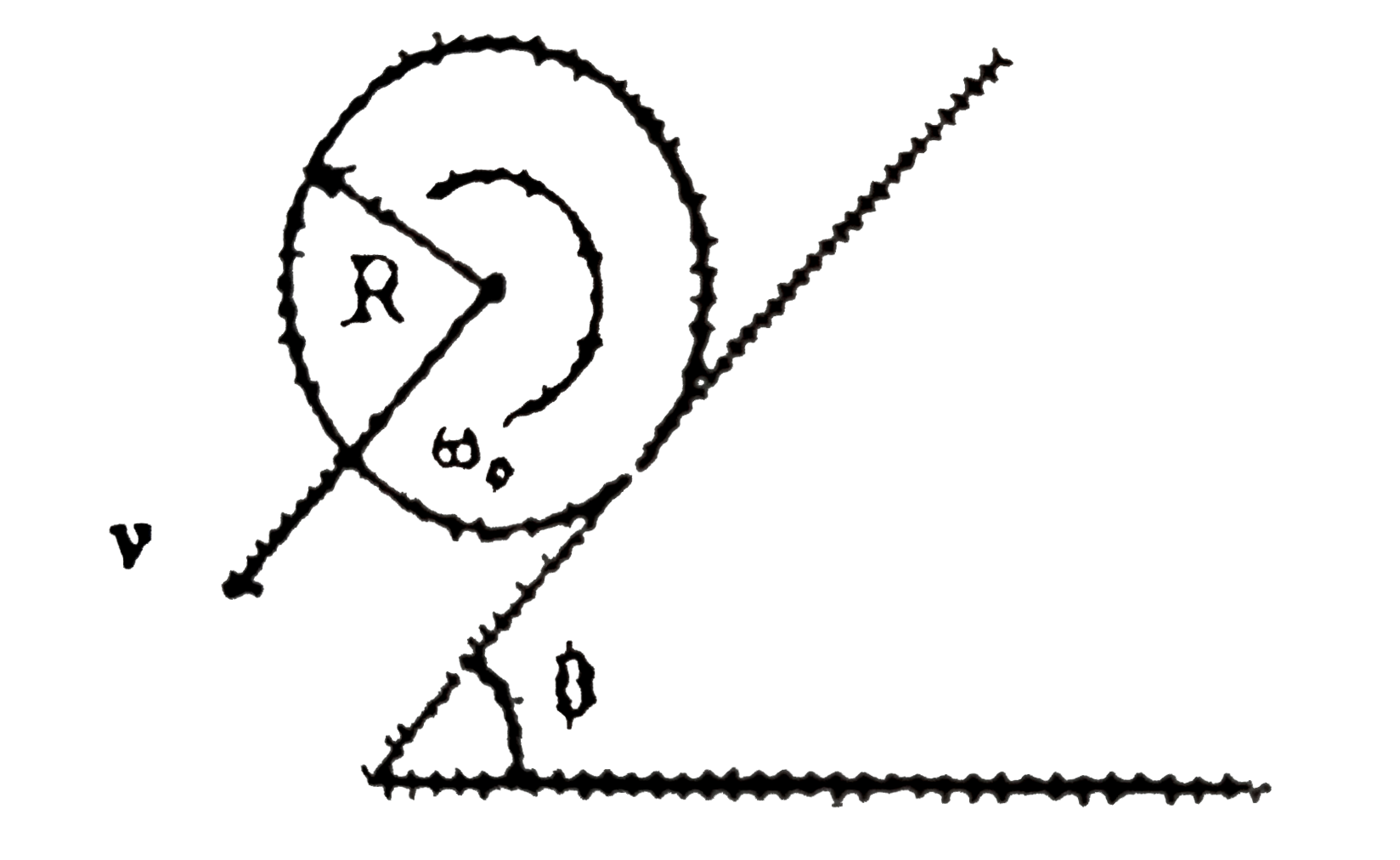A sphere of mass m and radius r is projected in a gravity free space with speed v. If coefficient of viscosity of the medium in which it moves is 16π , the distance travelled by the body before it stops is
mv2r
mv2r
mvr
none of these
The correct Answer is:C
The only force acting on the body is the viscous force
Here, mvdvdx=−6πηrv=−rv
⇒0∫vmdv=x∫0−rdx⇒x=mvr
Topper's Solved these Questions
- DAILY PRACTICE PROBLEMBOOK - RESONANCE ENGLISHCHAPTER - DAILY PRACTICE PROBLEMEXERCISE - DPP No.62
9 Videos
- DAILY PRACTICE PROBLEMBOOK - RESONANCE ENGLISHCHAPTER - DAILY PRACTICE PROBLEMEXERCISE - DPP No.63
9 Videos
- DAILY PRACTICE PROBLEMBOOK - RESONANCE ENGLISHCHAPTER - DAILY PRACTICE PROBLEMEXERCISE - DPP No.60
8 Videos
- CURRENT ELECTRICITYBOOK - RESONANCE ENGLISHCHAPTER - CURRENT ELECTRICITYEXERCISE - High Level Problems (HIP)
19 Videos
- ELECTRO MAGNETIC WAVESBOOK - RESONANCE ENGLISHCHAPTER - ELECTRO MAGNETIC WAVESEXERCISE - Exercise 3
27 Videos
Similar Questions

A solid sphere of mass m and radius R is gently placed on a conveyer belt moving with constant velocity v0. If coefficient of friction between belt and sphere is 2/7 the distance traveled by the centre of the sphere before it starts pure rolling is
View SolutionA sphere of mass m and radius r is projected in a gravity free space with speed v. If the coefficient of viscosity of the medium in which it moves is 1/6π Pa s, the distance travelled by the body before it stops is :
View Solution
A container filled with viscous liquid is moving vertically downwards with constant speed 3v0. At the instant shown, a sphere of radius r is moving vertically downwards (in liquid) has speed v0. The coefficient of viscosity is η. There is no relative motion between the liquid and the container. Then at the shoen instant, The magnitude of viscous force acting on sphere is
View SolutionA small steel ball of radius r is allowed to fall under gravity through a column of a viscous liquid of coefficient of viscosity η. After some time the velocity of the ball attains a constant value known as terminal velocity υT. The terminal velocity depends on (i) the mass of the ball m (ii) η, (iii) r and (iv) acceleration due to gravity g . Which of the following relations is dimensionally correct?
View SolutionA circular ring of mass M and radius 'a' is placed in a gravity free space. A small particle of mass m placed on the axis of the ring at a distance √3a from the center of the ring, is released from rest. The velocity with which the particle passes through the center of the ring is
View SolutionA force of 3.14N is required to drag a sphere of radius 4cm with a speed of 5ms−1 in a medium in gravity free space. Find the coefficient of the viscosity of the medium.
View SolutionA sperical object of mass 1kg and radius 1 m is falling vertically downward inside a viscous liquid in a gravity free space. At a certain instant the velocity of the sphere is 2 m/s. if the coefficient of viscosity of the liquid is 118πN−S/m2 then velocity of ball will become 0.5 m/s after a tie
View SolutionA sphere of radius R is projected with a reverse spin ω0 down a rough inclined plane with a speed v0 for which coefficient of friction is μ>tanθ, where θ is angle of the inclination. Show that it will turn back if
ω>5v0μ2R(μ−tanθ)

View SolutionA sperical body of mass m and radius r is allowed to fall in a medium of viscosity η. The time in which the velocity of the body increases from zero to 0.63 times the terminal velocity (v) is called constant (τ). Dimensionally , τ can be represented by
View SolutionInitially a car is moving with speed of 20ms−1 and covers a distance of 100 m before it comes to rest. On making the initial speed of car 40ms−1 keeping the acceleration same, the distance travelled by car before it comes to rest is
View Solution
